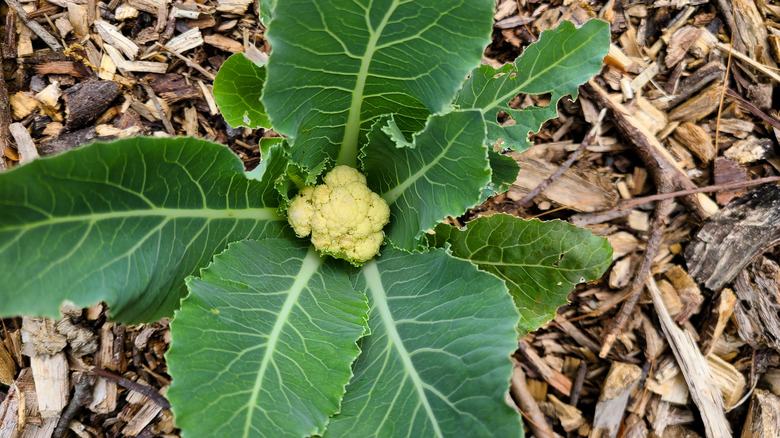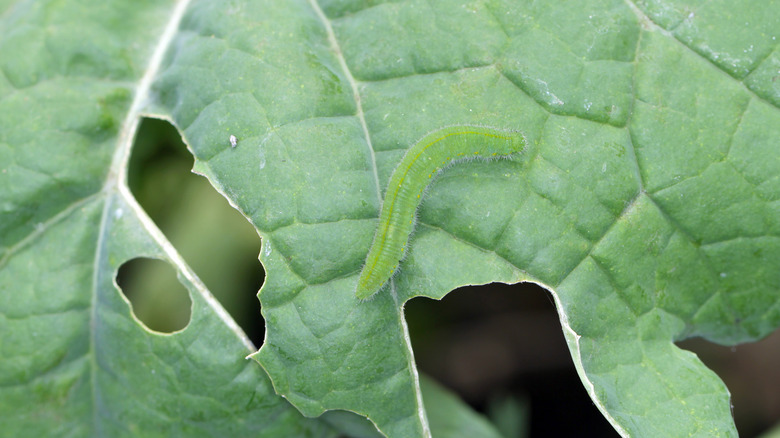You May Want To Rethink Growing One Popular Vegetable In Your Garden
Gardening isn't always easy, especially if you're brand new to the growing game. Every gardener probably has a story of why they won't grow a certain crop. For example, cauliflower is so notoriously difficult to grow — so much so that even seasoned backyard gardeners can't always get it just right. Because of that, you might not want to start out with it.
Cauliflower is delicious, nutritious, and gorgeous, but you rarely get all three without paying for it with hard work. This cruciferous vegetable demands plenty of nutrients and water and is a bit picky about the timing. If you're new to gardening, you may want to wait a while before trying your hand with this needy plant. Starting with an easier Brassica like kale, bok choy, or mustard may be best. Of course, if you enjoy a challenge, you can always try growing cauliflower in a greenhouse to keep the conditions stable.
Conditions have to be just right
It's common knowledge among gardeners that every plant has its own requirements, but there's something about cauliflower that makes it seem a little more fussy than others. You need to give the plant enough water to grow that beautiful curd. "Enough" usually means 1-2 inches per week, but it likes its water all at once so it can soak deep into the ground. If more than two inches of soil aren't wet, you need to keep watering.
It also needs a lot of nutrients to grow, so expect to fertilize your soil frequently. Compost or chemical fertilizers will work, but what you need depends on the soil. While many plants are forgiving of subpar soil, cauliflower isn't; you should get a soil test done to see what nutrients your dirt is missing. You also need to monitor pH levels, which should be between 6.0 and 6.8.
Timing is also everything when it comes to cauliflower. If you plant them when the weather is too hot or cold, they won't develop properly and could eventually die. You must plant them before the first fall frost, but you can't until the weather dips below 75 degrees. Row covers will help them stay warm in cool weather, and shade covers will help them keep cool.
Pests and problems are readily available
Pests seem to love cauliflower as much as the gardener trying to grow them. The biggest pests to watch out for are cabbage worms. These hungry fellas will chomp away at your cauliflower leaves and leave giant holes in them. The plant is usually salvageable, but if the pests are left unchecked, they can ruin your crop. Other common pests that will eat up your plant include flea beetles, which hurt seedlings the most, and cabbage maggots, which feed on root systems until the plant dies.
The thing you're after is the thing that's hardest to obtain: a healthy cauliflower crown. Nutrient deficiencies can lead to several problems, like a brown crown or no crown at all. Not only can cauliflower suffer from a lack of nitrogen, phosphorous, and potassium — the three main nutrients in fertilizer — but it can also be unhappy with a lack of boron, which really can't be measured without a soil test.
However, white cauliflower heads also won't stay white unless you blanch them, which means tying the outer leaves over the head to protect them from the sun. There are self-blanching varieties, but if you don't want to go through this process, green, orange, and purple varieties don't need to be blanched.


